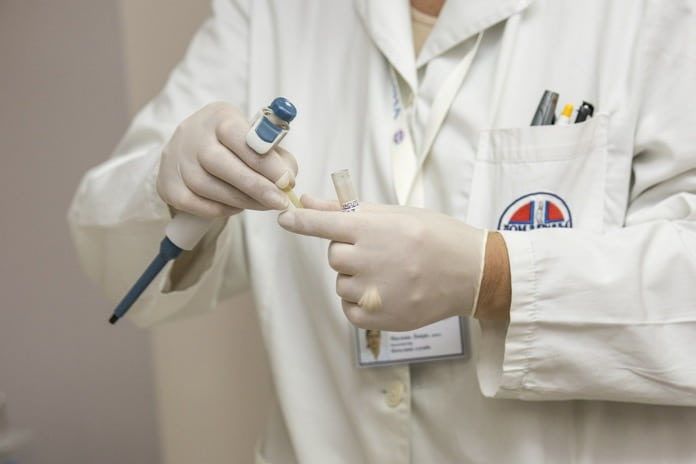Stem cell therapeutics is a trending theme in recent clinical trials, yet few seem to become FDA approved. Due to the many hurdles in handling stem cells for clinical use, researchers are looking towards new solutions in improving stem cell therapeutics.
Stem cell therapeutics marks a new age in medicine. Stem cell therapeutics uses stem cells to regenerate damaged tissue. Stem cells are naturally found throughout our bodies and are essential for growth, healing, and anti-aging. Scientists and physicians in any of these fields are interested in how we can control stem cells to tackle the biggest medical issues of today, namely degenerative and genetic diseases.
Within the past couple of decades, there has been an explosion in stem cell clinical trials to see what diseases can be treated using stem cell therapies. One promising clinical trial found treating patients with macular degeneration, a type of eye disease causing blindness, was able to boost eyesight. Although there are plenty of clinical trials and an even greater amount of excitement over stem cell therapeutics, few have actually been FDA approved.
Major Challenges
There are three major challenges when handling stem cells for clinical use. First, it is difficult to maintain healthy stem cells outside of the body. Second, growing enough stem cells for clinical use is problematic since each patient needs millions of cells over the course of their treatment. Finally, directing stem cells towards regeneration and being accepted by the patient’s body is difficult. In a recent review published in the journal Nature Insight, researchers revisit these challenges in light of new advances in stem cell research.
3D Culture Grows Healthier Stem Cells
Stem cells are typically grown in laboratories on flat plastic dishes. This type of culture, also known as 2D culture, has been conventional for decades since its relatively cheap and accessible. However, recent research has shown stem cells are maintained better in 3D culture than in 2D culture.
3D culture embeds stem cells in a gel-like substance, known as a hydrogel. 3D cultures provide two key advantages over conventional 2D culture: greater cell growth and precise culture fine-tuning.
Cells grown in 3D cultures are suspended in a webbing of elastic polymers. Depending on the polymer and how much of the polymer there is, the cells can feel greater or less stiffness from the hydrogel. This is similar to laying on an extra soft mattress (low stiffness) compared to a firm mattress (high stiffness). Interestingly, just as we have preferences for how firm our mattress is, cells prefer certain stiffness’s over others.
Stem cells are highly sensitive to the stiffness of their environment. Recent research has shown that stem cells are best maintained in a stiffness that is similar to human tissue stiffness. For example, mesenchymal stem cells—which are commonly used in stem cell clinical trials—are better maintained in soft culture than in stiff culture. Researchers found that soft 3D culture allowed mesenchymal stem cells to maintain their regenerative qualities longer than in stiffer 2D culture conditions which deteriorated their regenerative abilities over time.
Additionally, 3D culture allows researchers to grow stem cells in greater quantity. Because 3D culture suspends stem cells in a hydrogel, researchers are able to grow more stem cells with fewer resources and with greater health compared to conventional 2D culture.
In stem cell therapeutics requiring tissue replacement, stem cells are typically matured before being introduced to the patient. Recent research on 3D culture has shown a dramatic shift in how stem cell maturation is performed. Stem cells are not only healthier in 3D culture, but their maturation can be controlled by changing hydrogel stiffness.
When researchers matured mesenchymal stem cells on stiff hydrogels, bone cell maturation was preferred. Contrastingly, culturing on medium stiffness hydrogel favoured muscle tissue. Yet, culturing on soft hydrogel favoured neural-like cells. Researchers are now realizing that stiffness is as an important factor in cell maturation as any other culture condition.
Hydrogels in Stem Cell Therapeutics
Hydrogels have seen such a boom in the past few years that new and interesting uses are being found constantly. Research has shown many stem cells die due to the stress of being injected through a standard needle, limiting the effectiveness of stem cell therapeutics. However, researchers are experimenting with injecting stem cells within a soft hydrogel to cushion the stress and increase cell survivability.
More significant applications have been seen wrapping cells within a thin film of the hydrogel to protect them from patient immune system rejection. Researchers and clinicians have high hopes this can be used to create an efficient cure for type-1 diabetics. By wrapping insulin-secreting cells in the hydrogel, these cells can be injected virtually anywhere under the skin to create a functional mini second pancreas with a low risk of rejection.
The Future of Stem Cell Therapeutics
Stem cell therapeutics is a trending theme in recent clinical trials, yet few seem to become FDA approved. Due to the many hurdles in handling stem cells for clinical use, researchers are looking towards new solutions in improving stem cell therapeutics.
Hydrogels seem to solve many of the significant issues with current stem cell therapeutics. Culturing on hydrogels provides healthier stem cells in greater quantity than conventional culturing. They can be used to control stem cell maturation providing better cells for regenerative therapies. Injectable hydrogel-stem cell combinations lower the risk of failure and patient immune system rejection. Indeed, hydrogels may soon be the newest trending theme in stem cell therapeutics.
Written by Aaron Kwong, MSc
Reference: Madl, C. M., Heilshorn, S. C. & Blau, H. M. Bioengineering strategies to accelerate stem cell therapeutics. 1–8 (2018). doi:10.1038/s41586-018-0089-z



